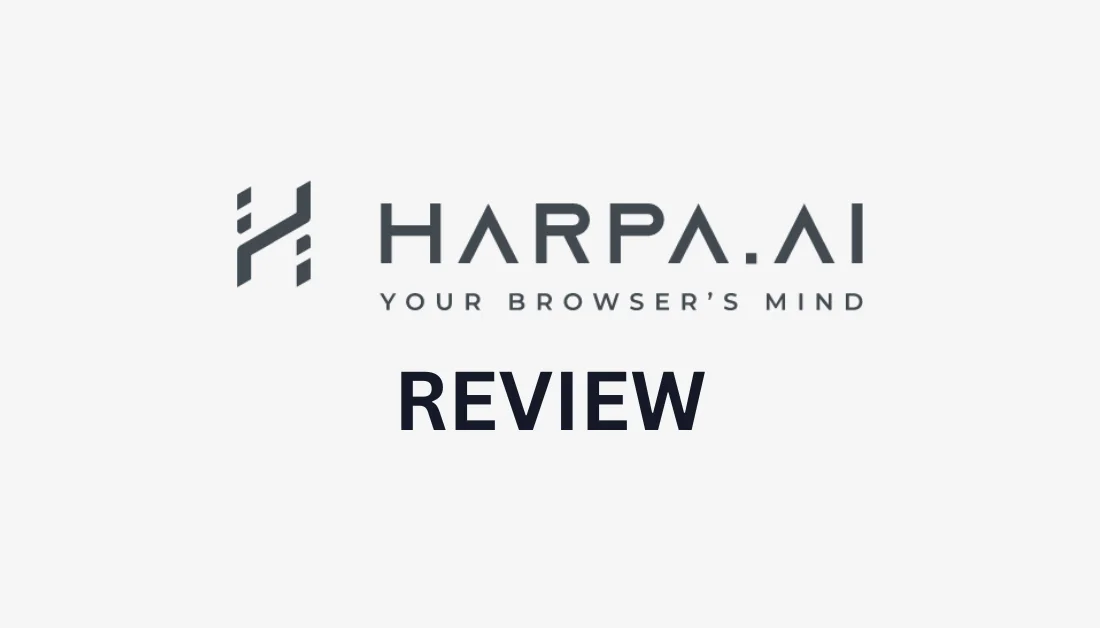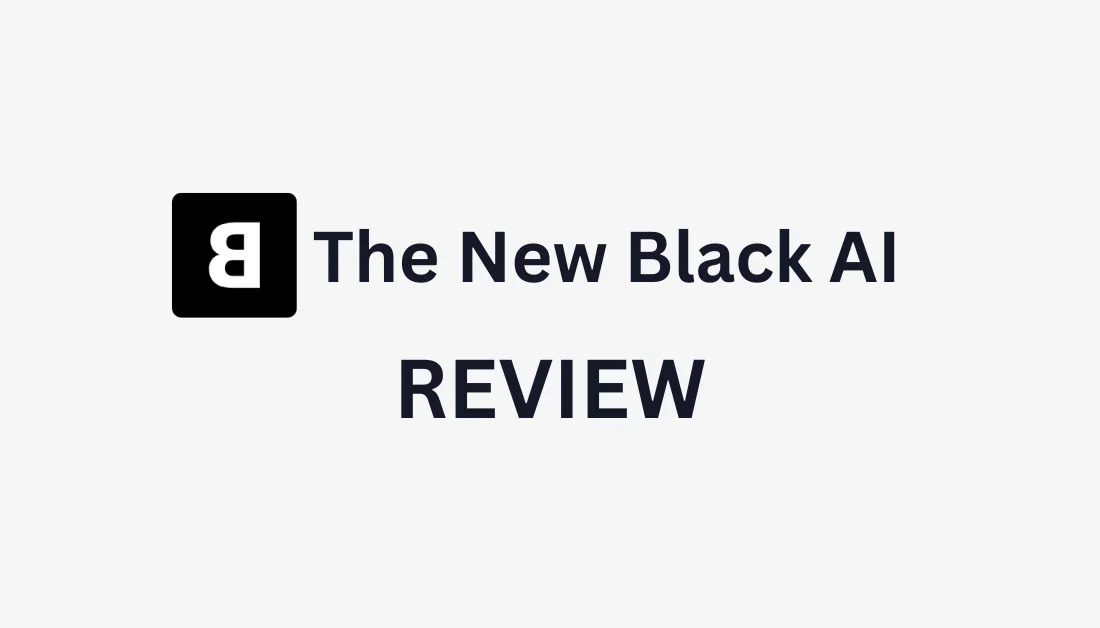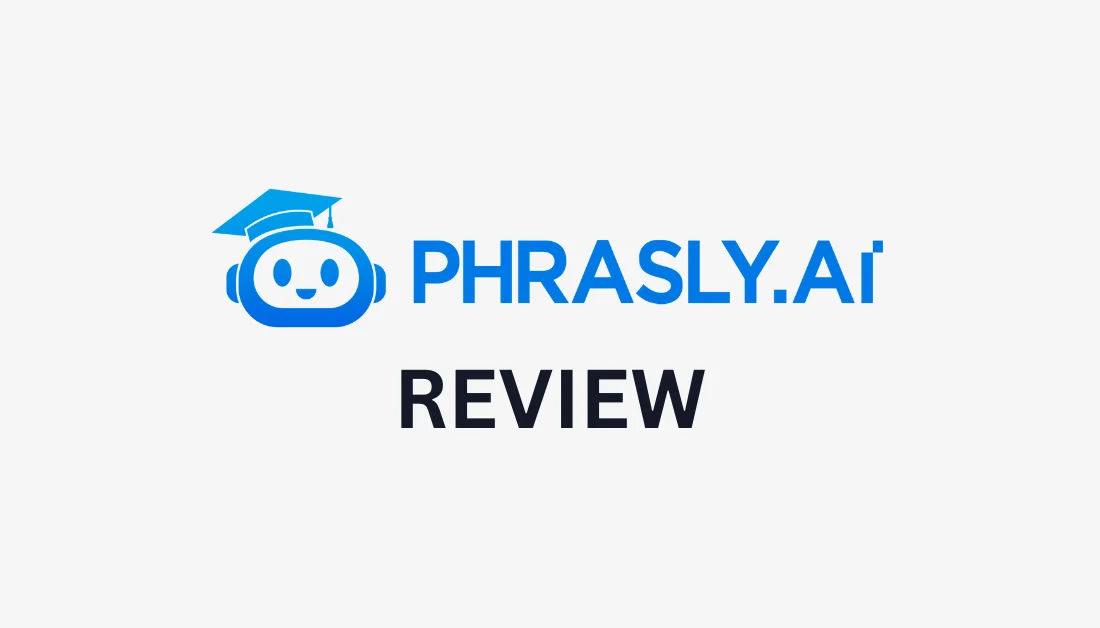
Verdict
HARPA AI automates tasks securely in your browser with over 100 commands and support for top AI models. It’s budget-friendly but has a bit of a learning curve.
Pros and Cons
- Automates routine online tasks to free up time for more complex projects.
- Combines AI with web automation for things like content creation, email management, and SEO optimization.
- Operates locally in the browser to ensure data security and GDPR compliance.
- Adapts to your preferences and offers over 100 pre-built automation commands.
- Supports multiple AI models including GPT-4, ChatGPT, and Claude 3.5.
- Offers budget-friendly options for businesses of various sizes.
- Limited to Chrome and other supported browsers which might be restricting.
- The features and commands may take time to master.
- Like all AI tools, it may generate irrelevant content.
- Premium features require paid plans.
What is HARPA AI?
HARPA AI is an AI-powered Chrome browser extension that brings artificial intelligence directly to your web browser (Chrome, Firefox, and Edge). It functions as a personal AI assistant that automates various online tasks and enhances productivity. For example, HARPA AI can summarize content, manage emails, generate SEO-optimized articles, and provide contextual AI assistance alongside search results from platforms like Google, Bing, DuckDuckGo and Yahoo.
HARPA's core technology is pretty interesting. They use something called a “hybrid AI engine” that works with multiple AI models including GPT-4, GPT-3, ChatGPT, Claude 3.5, and Gemini. This multi-model approach lets you switch between models for different tasks!
One thing that really stood out to me is their stance on privacy. They don't store your AI conversations or data on their servers, and they're GDPR compliant.
What also I find particularly smart is how easily accessible HARPA is. You can activate HARPA with Alt + A, or use various shortcuts starting with “//” for different functions. For example, pressing F finishes a draft, G checks grammar, P rephrases text, and so on.
The interface integrates directly into your browser, so there's no need to switch between different applications or tabs. Everything from drafting emails, analyzing SEO, tracking prices, and more happens right where you're working!
One of the more practical aspects of HARPA is its automation capabilities. You can set it up to monitor websites, trigger actions through services like Zapier or Make.com, and even create custom AI agents for specific tasks.
A key differentiator is that HARPA isn't just about generating content. It's about bringing AI assistance to your actual workflow, whether that's drafting emails, learning languages, analyzing SEO, or tracking price changes across e-commerce sites. HARPA AI is trusted by about 400,000 professionals and maintains a 4.9-star rating on the Chrome Web Store!
Who is HARPA AI Best For?
HARPA AI is an excellent tool for anyone looking to boost their productivity and streamline their online tasks.
Here are the primary types of people who benefit the most from using HARPA AI:
- Freelancers can use HARPA AI to manage client communications, generate invoices, and create proposals efficiently.
- Students can use HARPA AI to summarize their academic articles, take notes, draft essays, and conduct research without switching between multiple tools.
- Marketers can use HARPA AI to generate ad copy, analyze competitor strategies, optimize SEO campaigns, and create content quickly.
- Small business owners can use HARPA AI to track prices, draft contracts, manage emails, and streamline overall business operations.
- Content creators like bloggers and social media managers can use HARPA AI to generate content ideas, optimize posts for SEO, and summarize information from various sources.
- Developers can use HARPA AI for writing and inspecting code, answering programming questions, and automating repetitive tasks related to software development.
- Researchers can use HARPA AI for data extraction and analysis for market research or competitive analysis to gather insights.
- HR professionals can use HARPA AI to improve resumes, write professional LinkedIn replies, and generate cover letters tailored to specific job applications.
- Language learners can use HARPA AI for real-time assistance with translations, grammar checks, and conversational language skill practice.
- E-commerce professionals can use HARPA AI to track prices and products across platforms to stay informed about market trends and competitor offerings.
- SEO Specialists can use HARPA AI to extract and research SEO keywords, create comprehensive keyword reports and content plans, perform SEO audits, and generate optimized articles.
HARPA AI Key Features
Here are HARPA AI's core features to improve how you handle daily online tasks.
Gmail Assistant for Inbox Management & Contextual Replies
The Gmail Assistant has been a game-changer for managing my overflowing inbox.
What's really cool about it is how it doesn't just generate generic responses. It actually learns your writing style and creates replies that sound like you wrote them yourself!
I was skeptical about it at first, but it's pretty impressive how it picks up on your tone and common phrases. The way it categorizes incoming emails automatically has also helped me maintain that elusive “inbox zero” I could only dream about.
AI-Powered Search with Hallucination-Free Responses & Citations
When it comes to search capabilities, HARPA does something pretty unique.
Instead of just generating AI responses out of thin air, it actually scans websites and provides answers with real citations. Just highlight any text on any website and hit the research button. HARPA AI's web crawler will conduct in-depth searches, analyzing up to 11 resources to generate a final response. This is huge for anyone who's been frustrated by AI hallucinations!
YouTube Video Summarization & Content Repurposing
The YouTube summarization feature is a huge time-saver.
It's easy to spend hours watching long videos for research, trying to scribble down notes. With HARPA AI, I can extract the key points from a two-hour video in minutes! Just use the “/youtube-summary” command to condense videos into concise summaries.
But it doesn't just summarize. You can repurpose the content into different formats, which is super helpful when you're creating content across multiple platforms like blogs and social media!
Style-Mimicking Capabilities for Various Content Types
HARPA AI's style-mimicking capabilities are where things get interesting.
HARPA can adapt its writing style for all sorts of content: emails, Tweets, LinkedIn posts, and even full articles. What makes this different from other AI writers is how it maintains consistency across different platforms while still matching your voice!
It gives you access to a range of writing styles and frameworks to customize your content effectively. It also supports 18 different writing styles categorized into four groups.
This feature is especially useful if you're working on multiple projects that need different tones.
Web Page Monitoring & Update Tracking
The web monitoring feature is something I didn't know I needed until I had it.
You can set HARPA to watch specific web pages and notify you when there are changes. This has been super helpful for tracking competitors' websites, price changes, or even just waiting for updates on sites you follow regularly.
Start by specifying what elements to monitor: prices, specific lines of text, or general page content. From there, set the frequency of checks (e.g., every three hours) and customize triggers and actions based on your needs.
There's even an Automation Dashboard, where you can view the status of your monitoring tasks and adjust settings as needed!
Over 100 Page-Aware Automations for Different Use Cases
One thing that really stands out is the automation library. There are over 100 different automations that understand the context of the page you're on.
For example, if you're on LinkedIn, HARPA AI can help refine your resume. On language learning sites, it can create practice exercises based on the content you're reading.
These aren't just generic scripts; they actually understand what you're trying to accomplish on each site.
Practical Feature Applications
Here's a breakdown of some practical ways these features work together.
1. Content Creation Workflow
- Use YouTube summarization to gather research
- Generate an outline with the writing assistant
- Expand sections while maintaining your style
- Optimize for SEO as you write
2. Email Management System
- Auto-categorize incoming messages
- Generate contextual replies in your voice
- Track important follow-ups
- Maintain consistent communication tone
HARPA AI understands different users need different things. Whether you're a content creator, marketer, researcher, or just someone trying to be more productive online, there's likely an automation that fits your workflow!
Content Creation and SEO Features
Here's how HARPA AI's content creation and SEO features transformed how I approach content strategy.
Long-Form Article Generation (up to 25,000+ words)
The long-form article generator can write up to 25,000+ words. But the best part is how it breaks down the writing process into manageable chunks.
Instead of just spitting out a massive wall of text, it uses different writing frameworks to structure the content properly. There are 25 writing frameworks to choose from, each serving a specific purpose.
What I really love is how you can start with a basic outline and then expand each section step by step. This helps maintain coherence even in long articles, which is something that other AI tools I've tried often struggle with.
SEO Audit Capabilities
The SEO features are where HARPA really stands out.
The built-in SEO audit tool doesn't just give you a generic checklist. It actually analyzes your content in real time and suggests specific improvements for keyword optimization, content quality, and user intent.
In other words, as you're working on your article, HARPA AI will highlight the semantic gaps. This means that as you write, HARPA AI will identify areas where additional context or keywords may be needed to enhance the article's relevance and effectiveness.
Here are some of HARPA's other capabilities:
- Ensure the content meets the standards of Google's E-E-A-T (Expertise, Authoritativeness, and Trustworthiness) guidelines, which are crucial for improving search engine rankings.
- The SEO audit feature works alongside ChatGPT to compile an SEO score for the page being analyzed. It'll give you insights into how well the content resonates with selected keywords.
- The integration of HARPA AI as a browser extension allows for easy access and use while working on web pages. This makes it easy to implement SEO improvements without switching applications.
Keyword Research & Reporting Tools
HARPA takes an interesting approach when it comes to keyword research. Instead of just showing you basic metrics, it helps you understand the search intent behind different keywords. This makes it easier to discover valuable long-tail keywords competitors miss.
HARPA AI also provides tools to track keyword performance over time to monitor your SEO efforts and identify new opportunities as they arise. This includes generating comprehensive reports that detail keyword metrics and related queries.
Content Calendar Creation
The content calendar creation tool doesn't just help you plan when to publish. It actually suggests topic clusters to maintain a clear content strategy.
For example, if you're writing about coffee brewing methods, it might suggest planning related articles about water temperature, bean grinding, and equipment maintenance, all falling in line with seasonal trends.
Article Outranking Strategies
HARPA's article outranking strategies are particularly effective. It analyzes top-ranking content for your target keywords and helps you identify gaps and opportunities.
But here's what's really clever: it doesn't just suggest adding more keywords. It helps you understand what questions your target audience is asking that aren't being answered well by existing content! This focus on audience intent allows for the creation of content that addresses unmet needs, which can lead to better engagement and higher rankings.
The tool also automatically finds Latent Semantic Indexing (LSI) keywords from search engine results pages (SERPs) and integrates them into the content, further optimizing it for SEO.
Content Creation Process with HARPA AI
Here's what a typical content creation process with HARPA AI looks like:
- Start with keyword research to identify opportunities
- Use one of the writing frameworks to create a detailed outline
- Generate section-by-section content, focusing on depth and value
- Run the SEO audit to identify optimization opportunities
- Refine the content based on competitive analysis
- Schedule related topics in the content calendar
Productivity Tools & Shortcuts
HARPA AI's productivity tools and shortcuts have saved me hours of work.
Quick-Access Shortcuts for Common Tasks
The quick-access system is incredibly simple. Everything starts with the “//” shortcut.
What I love is how intuitive the commands are:
- F to finish what you're writing
- G for grammar checks
- P to rephrase something
- T for translations
- S for search
Grammar Checking & Proofreading
The grammar-checking feature is more thorough than I expected.
Unlike basic spell checkers, it catches those tricky contextual errors that often slip through. But it doesn't just flag issues. It explains why something might need changing!
This has actually helped me improve my writing over time, instead of just blindly accepting corrections.
Translation Capabilities
HARPA AI's translation capabilities came in handy in ways I hadn't anticipated.
For example, HARPA can quickly translate emails and documents without leaving the browser. This is a huge time-saver, especially if you're someone who works with international clients.
The quality of translations is surprisingly good, too. It picks up on context and idioms better than most translation tools I've used.
Search Integration
The search integration is particularly clever. Instead of opening new tabs and jumping between different search results, HARPA helps you find what you need right where you are while you're working!
Custom AI Agents Creation
The custom AI agents feature is where things get really interesting. You can create specialized agents for specific tasks or industries.
For example, you can set up an agent specifically for content research who knows your preferred writing style and the key terms in the industry. These agents can access page content, perform searches, and even run automations.
6 Specialized Features
Let me share my experience diving into HARPA's specialized features. These tools have transformed how I handle various online tasks, and I've picked up some interesting tricks along the way.
- Midjourney Prompt Generation with 30+ Templates: Getting the technical details right for Midjourney prompts can be tricky. HARPA comes with these amazing templates that break it all down. You can specify things like camera types, lens settings, and lighting, and it builds these incredibly detailed prompts.
- Language Learning Assistance and Correction: The language learning features don't just check your basic grammar; they actually help you build a learning plan and correct your mistakes in context. For example, instead of just marking something as wrong, it explains why it's incorrect and helps you understand the underlying grammar rule.
- Price Tracking Across E-Commerce Platforms: This tool monitors prices across different e-commerce sites: Amazon, Walmart, eBay, you name it. It even gives you out-of-stock notifications to snag specific items when they're back in stock.
- Website Automation & Monitoring: The website automation features allow you to create custom workflows that fill out forms, navigate through sites, and extract data. For example, you can set up automations to monitor competitor websites and alert you when they make significant changes.
- Integration with Make.com, Zapier, and n8n: Connecting HARPA to other tools through Make.com (formerly Integromat), Zapier, or n8n really amplifies its capabilities. For example, you can set up a workflow where HARPA monitors specific websites, extracts pricing data, and automatically updates a Google Sheet through Zapier. It's like having a virtual assistant working 24/7 to keep your data current.
- Data Extraction & Webhook Functionality: The data extraction features are not just limited to scraping text. You can pull structured data from almost any webpage and send it wherever you need it through webhooks! It's really helpful for market research and competitive analysis. Just remember to be mindful of websites' terms of service when using these features.
How to Use HARPA AI
Here's how I installed the HARPA AI extension and used it on web pages, emails, YouTube, and Google:
- Install the Browser Extension
- Use HARPA for Webpages
- Use HARPA for Emails
- Use HARPA to Summarize an Email
- Use HARPA to Summarize a YouTube Video
- Generate an AI Answer on Google
Step 1: Install the Browser Extension

First, you have to add HARPA AI to your browser. It's primarily a browser extension that works in Chrome, Brave, Opera, Edge, and Firefox.
Start by going to harpa.ai and selecting “Add to Browser.”

From there, click “Add to Chrome” and create a HARPA AI account.
Step 2: Use HARPA for Web Pages

Once installed, you'll see the HARPA icon on the bottom right of your browser. You can hover over it to display its features or (my favorite) press “Alt + A” to activate HARPA's quick access bar.
The real magic happens with the “//” shortcuts. Here are some of the most useful ones:
- //V: Capture View
- //S: Search the Web
- //E: Explain
- //A: Ask Page
- //U: Summarize
- //D: Extract Data
- //O: Repurpose Page
- //W: Rewrite
- //R: Write a Reply
Step 3: Use HARPA for Emails
For email, there are a couple of ways you can use HARPA:

Start by opening your Gmail and hitting “Alt + A.” You'll see a couple of options:
- Search the web (//S)
- Summarize email (//U)
- Finish writing (//F)
- Write email (//W)
- Reply to email (//R)
Step 4: Use HARPA to Summarize an Email

I opened one of my emails and hit “//U” on my keyboard to summarize the email. Immediately, HARPA generated a summary of the sender's intent, key takeaways, and reply ideas!

Using the “//R” command gave me options for how I wanted to reply (agree, disagree, acknowledge, question, etc.) I selected “Agree” and HARPA generated a suitable response for me! I could copy it, paste it as a reply, and edit it how I wanted.
Step 5: Use HARPA to Summarize a YouTube Video

Next, I wanted to see what HARPA could do with YouTube videos:
- Summarize video
- Repurpose video
- Ask & seek video
- Create a script
- Write comment
- Analyze channel
- Write a reply

I selected “Summarize video.” Instantly, HARPA AI generated a summary of the video with timestamps! I could now save the summaries for reference or look for content gaps and unique angles in the video content.
Step 6: Generate an AI Answer on Google

HARPA AI can be used on Google too.
For example, I searched “harpa ai” on Google. I clicked the button with “AI Answer” in the search bar.

Immediately, HARPA explained what I had put into Google with related queries! This took doing research on Google to a deeper level.
Those are just a few ways to use HARPA AI to boost your online productivity and simplify tasks across various platforms! Whether you're summarizing content, generating replies, or extracting insights, HARPA AI's intuitive shortcuts and features make it a versatile tool for streamlining workflows.
Overall, HARPA AI streamlined my daily tasks with its intuitive shortcuts and versatile features. It made it effortless to summarize, repurpose, and generate content across emails, web pages, and videos, transforming how I approach online research.






